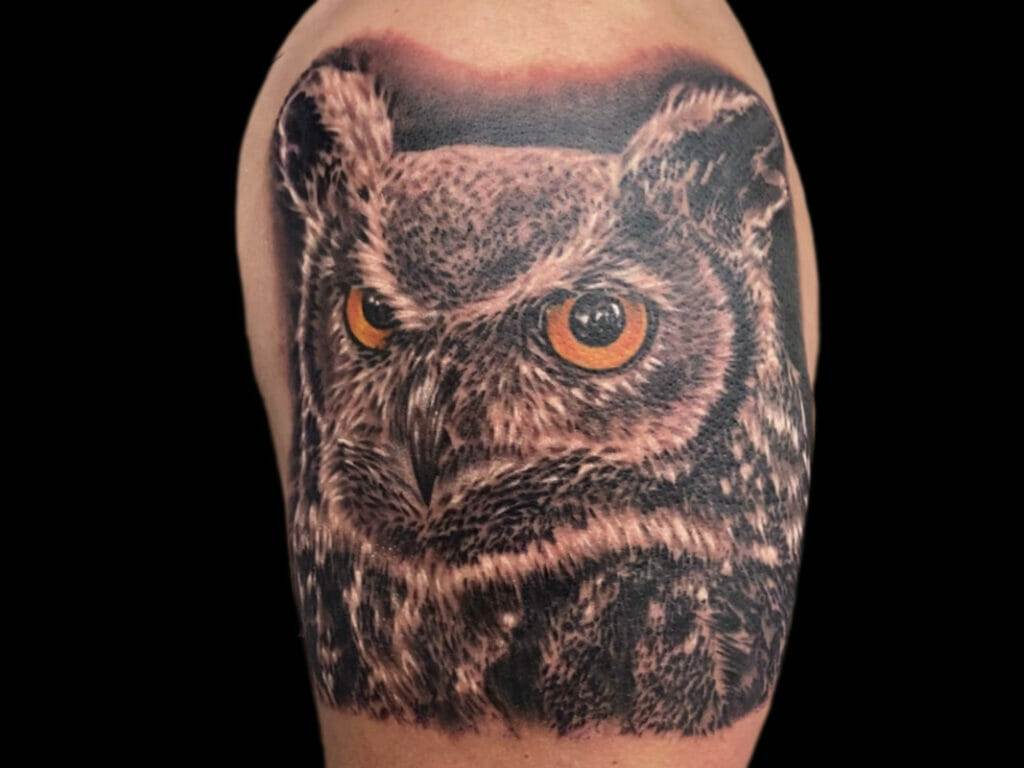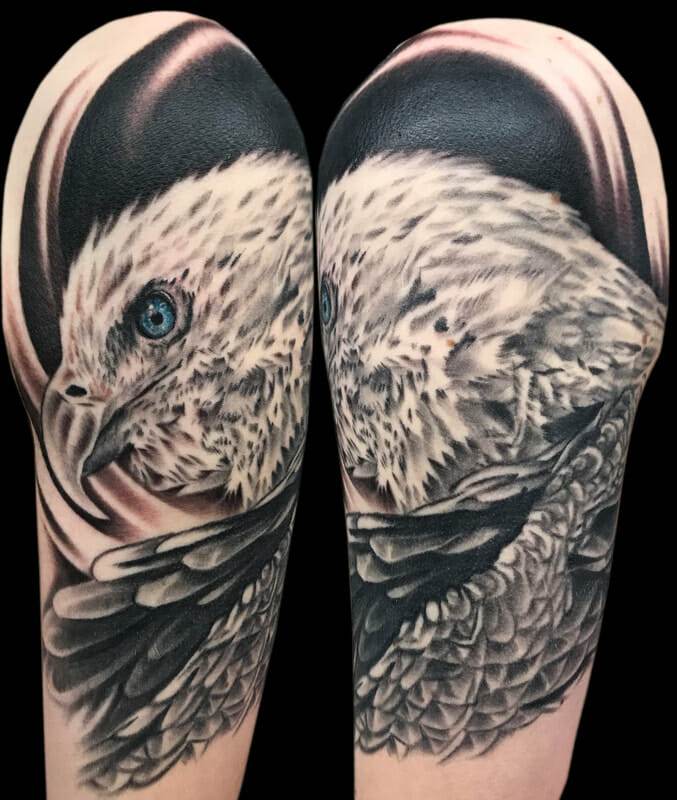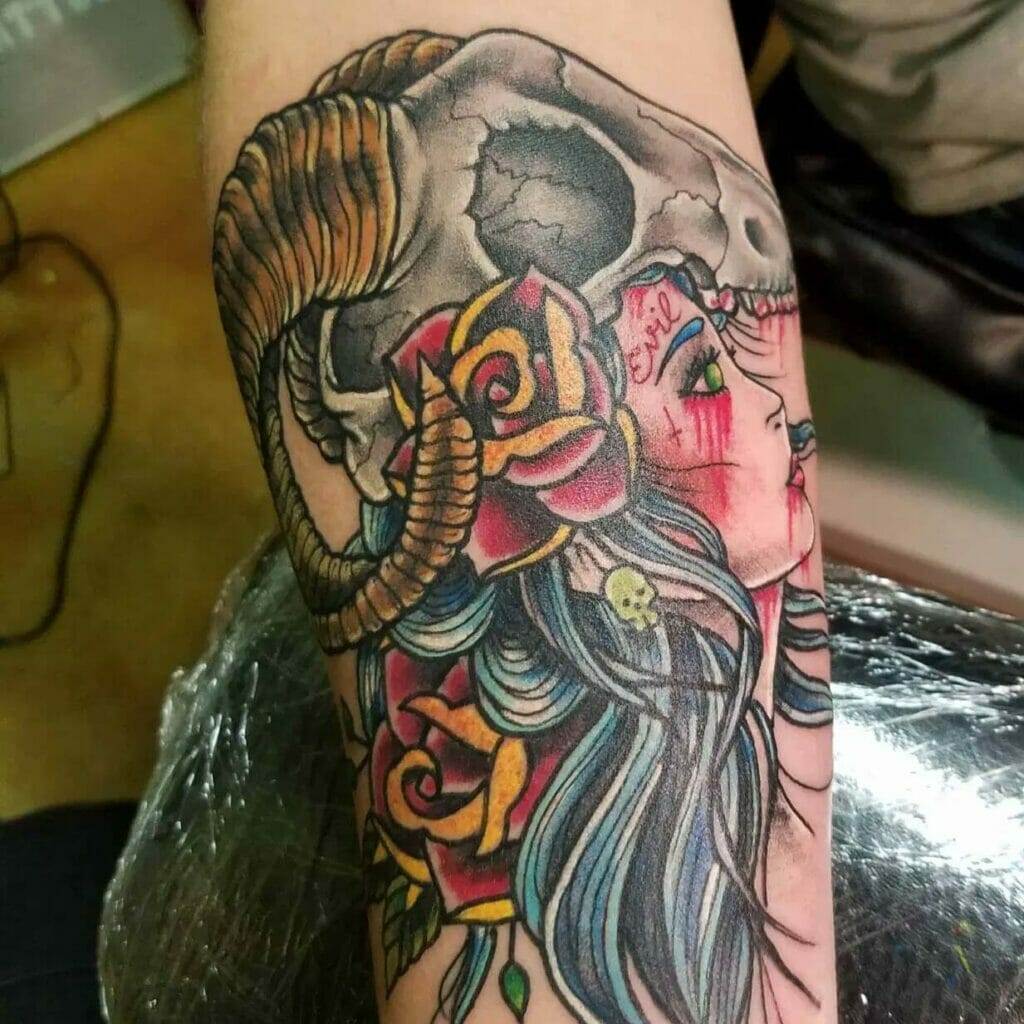Realism tattooing has become increasingly popular in recent years, with more and more people opting for this style of tattoo. Realism tattooing is a technique that aims to create tattoos that look like realistic photographs or paintings. It involves using shading, texture, and color to create the illusion of depth and dimension on the skin. This article will explore the basics of realism tattooing, including how to choose the right subject matter, finding the right artist, and proper aftercare.
Understanding the Basics of Realism Tattooing
When it comes to realism tattooing, choosing the right subject matter is crucial. Realism tattoos are highly detailed and require a skilled artist to execute properly. It’s important to choose a subject that can be realistically rendered in a tattoo. For example, portraits of loved ones or animals are popular choices for realism tattoos because they can capture the intricate details of a person’s face or the texture of an animal’s fur.
Proper proportions and placement are also key factors in achieving a realistic tattoo. The artist must carefully consider the size and shape of the body part where the tattoo will be placed to ensure that the proportions are accurate. Additionally, the placement of the tattoo can affect its overall appearance. For example, a portrait tattoo on the forearm may look different than the same tattoo on the chest due to differences in muscle structure and skin texture.
Reference images play a crucial role in achieving a realistic tattoo. Artists often use reference images as a guide to ensure that they capture all the necessary details and accurately represent the subject matter. These images can be photographs, paintings, or even other tattoos that serve as inspiration for the final design. By using reference images, artists can ensure that their tattoos are as realistic as possible.
Preparing for Your Realism Tattoo: What to Expect
Proper preparation is key to getting a successful realism tattoo. Before your appointment, make sure to eat a good meal and stay hydrated. This will help keep your energy levels up during the tattooing process. It’s also important to avoid alcohol or drugs before getting a tattoo, as they can thin your blood and make the process more difficult.
During the tattooing process, expect some discomfort or pain. Realism tattoos often require long sessions, so be prepared for multiple hours of sitting still. It’s important to communicate with your artist if you need breaks or if the pain becomes too intense. They can work with you to make the process as comfortable as possible.
Aftercare is crucial for ensuring proper healing and preserving the quality of your realism tattoo. Follow your artist’s aftercare instructions carefully, which may include keeping the tattoo clean, avoiding direct sunlight, and applying a healing ointment. Proper aftercare will help prevent infection and ensure that your tattoo heals properly.
The Importance of Communication with Your Tattoo Artist
Clear communication with your tattoo artist is essential for achieving the desired result. Be specific about what you want and provide reference images if necessary. This will help the artist understand your vision and ensure that they can accurately capture the details you want in your tattoo.
Communication can also help the artist make suggestions or adjustments to the design that may enhance its realism. They may have insights or ideas that you hadn’t considered, so be open to their suggestions. Remember, they are the experts and have experience in creating realistic tattoos.
Realism Tattooing Techniques: From Shading to Texture

Realism tattooing involves a variety of techniques to create the illusion of depth and dimension on the skin. Shading is one of the most important techniques used in realism tattoos. It involves using different shades of ink to create highlights and shadows, which give the tattoo a three-dimensional appearance.
Texture is another important aspect of realism tattooing. Artists use various techniques, such as stippling or dotwork, to create the appearance of texture on the skin. This can be used to mimic the texture of fur, skin, or other surfaces.
Proper technique is crucial in achieving a realistic tattoo. Skilled artists have a deep understanding of how to manipulate ink and create realistic effects on the skin. They know how to use different needle sizes and techniques to achieve the desired result.
Color vs. Black and Grey Realism Tattoos: Which is Right for You?
When it comes to realism tattoos, there are two main styles: color and black and grey. Color realism tattoos use a wide range of colors to create vibrant and lifelike images. They can be more visually striking and can capture the full range of colors found in the subject matter.
Black and grey realism tattoos, on the other hand, use only black ink or varying shades of grey to create a more subdued and monochromatic look. These tattoos can have a more classic or timeless feel and can be particularly effective for portraits or images with a lot of shading.
Choosing between color and black and grey realism tattoos depends on personal preference and the subject matter. Some subjects may lend themselves better to color, while others may be more suited for black and grey. It’s important to discuss your options with your artist and consider their recommendations based on their expertise.
Realism Tattooing for Different Body Parts: Pros and Cons
The body part where you choose to get a realism tattoo can affect its overall appearance. Different body parts have different shapes, sizes, and textures, which can impact how the tattoo looks. For example, a realism tattoo on a flat surface like the chest or back may appear more realistic than the same tattoo on a curved surface like the arm or leg.
Each body part has its own pros and cons when it comes to realism tattoos. For example, the chest or back provides a large canvas for intricate details and shading. However, these areas can be more painful to tattoo due to the proximity of bones and nerves.
The arms and legs are popular choices for realism tattoos because they provide a good balance between size and visibility. However, these areas may require more touch-ups over time due to the constant movement and exposure to the elements.
When choosing a body part for your realism tattoo, consider the subject matter and how it will look on that specific area. Discuss your options with your artist to determine the best placement for your tattoo.
Aftercare for Your Realism Tattoo: Tips and Tricks
Proper aftercare is crucial for ensuring that your realism tattoo heals properly and maintains its quality over time. Follow your artist’s aftercare instructions carefully, as they will provide specific guidelines based on their expertise.
Some general tips for aftercare include keeping the tattoo clean by gently washing it with mild soap and water. Avoid soaking the tattoo in water, such as in pools or hot tubs, as this can increase the risk of infection. Apply a thin layer of healing ointment or moisturizer as recommended by your artist to keep the tattoo hydrated.
It’s important to avoid direct sunlight and excessive sweating during the healing process, as these can fade the tattoo and slow down the healing process. Wear loose clothing that won’t rub against the tattoo and avoid scratching or picking at it.
Common Mistakes to Avoid When Getting a Realism Tattoo
There are several common mistakes that people make when getting a realism tattoo. One of the biggest mistakes is not doing enough research and choosing an inexperienced or unskilled artist. Take the time to find a reputable artist who specializes in realism tattoos and has a strong portfolio of work.
Another common mistake is not properly preparing for the tattooing process. Make sure to eat a good meal, stay hydrated, and avoid alcohol or drugs before your appointment. This will help ensure that you have enough energy and that the tattooing process goes smoothly.
Lastly, not following proper aftercare instructions is a common mistake. Proper aftercare is crucial for ensuring that your tattoo heals properly and maintains its quality over time. Follow your artist’s instructions carefully and reach out to them if you have any questions or concerns.

Realism Tattooing Inspiration: Famous Artists and Their Masterpieces
There are many famous realism tattoo artists who have created stunning masterpieces in this style. Some notable artists include Nikko Hurtado, Paul Acker, and Robert Hernandez. Their work often features highly detailed portraits, animals, or fantasy elements.
Looking at the work of famous realism tattoo artists can provide inspiration for your own tattoo choices. It can help you see what is possible with this style and give you ideas for subject matter or design elements. However, it’s important to remember that each tattoo is unique and should be customized to your own preferences and vision.
Realism tattooing is a popular style that aims to create tattoos that look like realistic photographs or paintings. It requires careful consideration of subject matter, proper proportions and placement, and the use of reference images. Finding a skilled artist and maintaining clear communication throughout the process are also crucial.
Proper preparation, aftercare, and avoiding common mistakes are important for achieving a successful realism tattoo. Whether you choose color or black and grey, and regardless of the body part you choose, realism tattoos can be a stunning and meaningful addition to your body art collection. Take the time to research, prepare, and communicate with your artist to ensure that your realism tattoo meets your expectations and stands the test of time.



